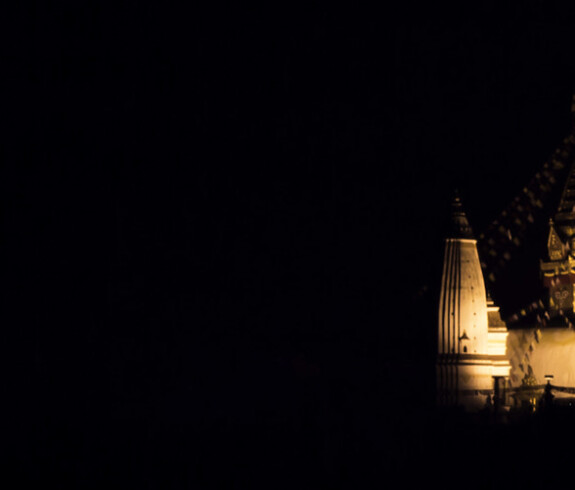Langtang Valley Trek is one of the most feasible treks in Nepal. Surprisingly, the Langtang Valley trek distance is just 61.8 km north of Kathmandu’s capital.
Carrying vast cultural significance, immeasurable biodiversity, and a serene atmosphere, trekking to Langtang Valley provides you with a series of adventures.
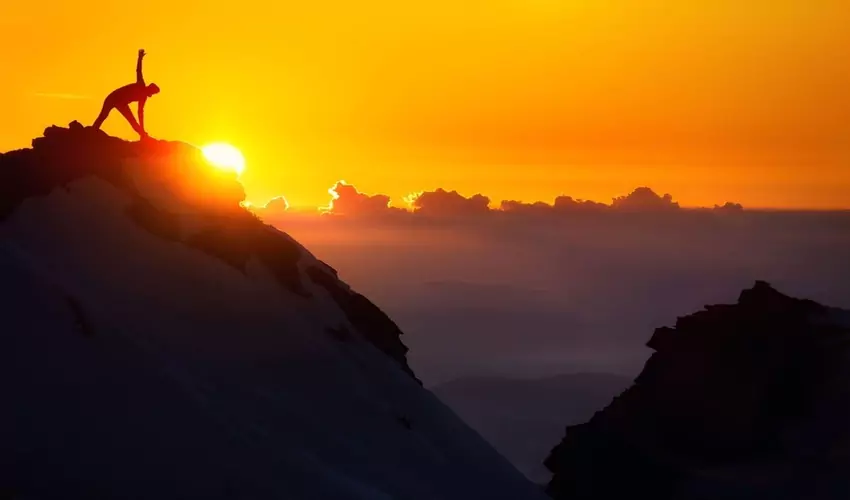
Why Langtang Valley Trekking?
With our 11-day Langtang Valley Trek package, you can experience the divine beauty of Langtang Valley.
1. Local Inhabitant and Cultural History of Langtang Valley
During the 11 days of the Langtang Valley trek, you will encounter the hospitality and friendliness of the local inhabitants of Langtang Valley. The majority of the Tamang ethnicity resides in this valley resembling Tibetan origin.
While trekking in Langtang Village, you will be amazed by the craftsmanship of the predominant inhabitants. Local houses, tea houses, and lodges are specially built with stones abundant in Langtang Valley.
Apart from traditional stone houses, you might also notice hand-carved beautiful wooden verandas on the trek. All these local cultures manifest the rich heritage of Langtang, Nepal.
2. Langtang National Park
With the utmost need to conserve the enormous biodiversity of the Langtang Region, Langtang National Park was established in 1976 A.D. In particular, the park extends from the sub-tropical climatic zone to the arctic deserts of the mountain.
Langtang’s alpine meadows below the arctic desert provide summer habitat for endangered fauna, Himalayan Musk deer, and near-threatened Himalayan Tahr.
Furthermore, the park is home to numerous populations of magnificent species like Red Panda, Snow Leopard, Himalayan Black Beer, and Assam Macaque. More than 250 species of birds are also seen in the Langtang region.
3. Langtang Mountain Range
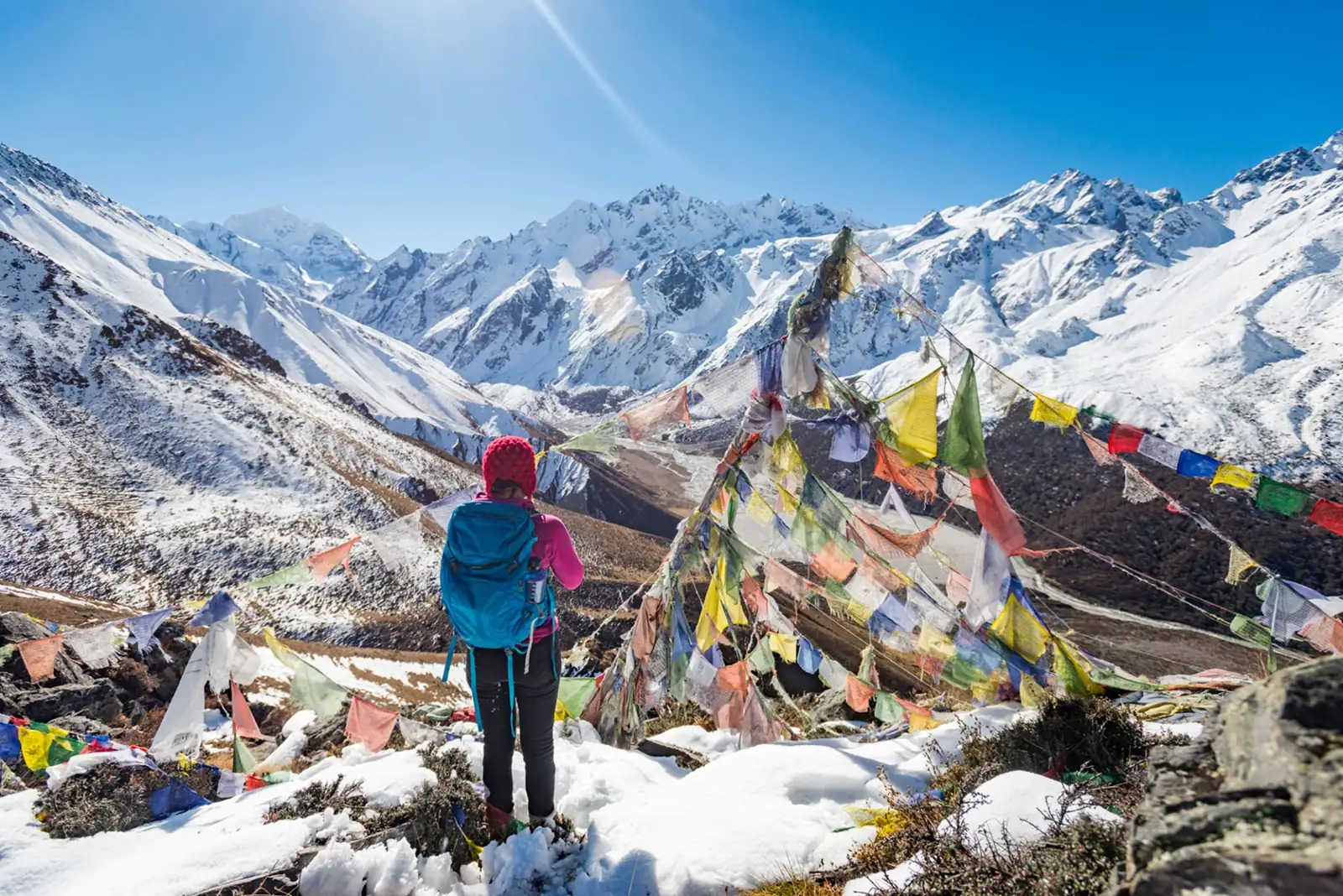
Langtang Valley trek has a spectacular collection of mountain views. On the north, Mt. Langtang Lirung (7,234 m) borders Langtang Valle, the 99th highest peak in the World.
Climbing up to Kyanjing Ri (4,773 m), one can hardly forget the magnificent 360 panoramic views of Mt. Langtang Lirung, Mt. Langsisha (5,050m), Mt. Naya Kanga (4,100m), and numerous snow-capped Himalayas of Langtang Mountain Range.
Besides, Yala Peak (5,520m) is also one of the best short-altitude peaks in the Langtang Region for trekking. Summiting the peak, trekkers can have the best view of Mt. Sishapangma, which lies in Tibet. Treasuring pure joy and experience, we move forward on our Langtang Trek.
4. Lakes and rivers
Langtang Valley sits on the lap of several mountains, forming the Langtang Mountain Range. The mountains indeed bless the Langtang region with over 70 glaciers of varying sizes. Alongside, high-altitude lakes carry aesthetic and religious values.
One of them is Gosaikunda Lake, located at 4350m elevation. It is believed that Lord Shiva thrust his Trishul to cut open the Mountain for water. He then drank the pure mountain spring water to cool down his burning throat after he swallowed poison for people’s sake.
Tourism and Employment in Langtang Valley
Before tourism started, locals sustained their livelihood by herding Yaks and other high-altitude live stocks. Dating back to the 1950s, the Government of Nepal, with the assistance of Swiss Technical, first established a cheese production center in the Kyangjin region of Langtang Valley.
The high pastures of Langtang Valley are much suited for the grazing of Yak. Before tourism, employment from cheese factories and yak herding sustained the livelihood of locals.
After the 1990s, people from all over the World started hiking up to Langtang Valley to explore its mesmerizing features. Tourism flourished, bringing employment to the locals.
Mainly people come to trek the following routes; Langtang Valley Trek, Gosaikunda Trek, Yala Peak Trek, and Tamang Cultural Trek.
Earthquake and re-construction of Langtang Valley
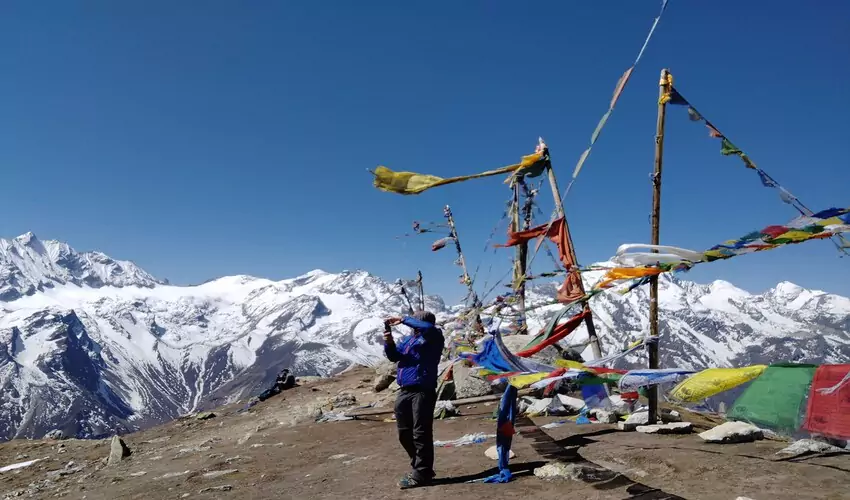
The massive earthquake in Nepal in 2015 caused an avalanche in the Langtang Region, leading to a colossal destruction of the valley. Reminiscing on the effect of that disaster, the Langtang Region has been born again with better construction and infrastructures to welcome back its travelers.
While trekking to the Langtang Region, you will be contributing to the renaissance of the Langtang Region. In addition, you will be helping local inhabitants as tourism is a vital aspect of income generation.
Best time for Langtang Valley Trekking
Although Langtang Valley Trek carries enormous nature and artistic elegance, to experience I, one must prepare their expedition cautiously with the appropriate season.
Trekking season is high from March to April (Spring Season) and October-November (Autumn season). The Langtang Valley trek route is clear, and the spectacular views and panoramic mountain sightings are far better in these seasons.
However, if you are a low-crowd person keen on hitting the trails during the winter breeze, then mid-February is best. The nights are moderately cold, whereas the daytime is excellent on the route.
Please read our Langtang Trek Blog on “Best Time for Langtang Valley Trek.”
Langtang Valley Trekking Trail
Langtang Valley trek trail is considered a moderate-grade trail. From beginner-level trekkers to professional trekkers, all can complete this trail efficiently. Trekking in the Langtang region is short and adventurous.
Moreover, it’s an experience gaining trial. It can further be categorized as an acclimatization trek as trekkers can hit up Langtang trails to prepare for their longer treks, like the Everest region trek.
You may also like the following:
Towards Langtang Valley Trekking
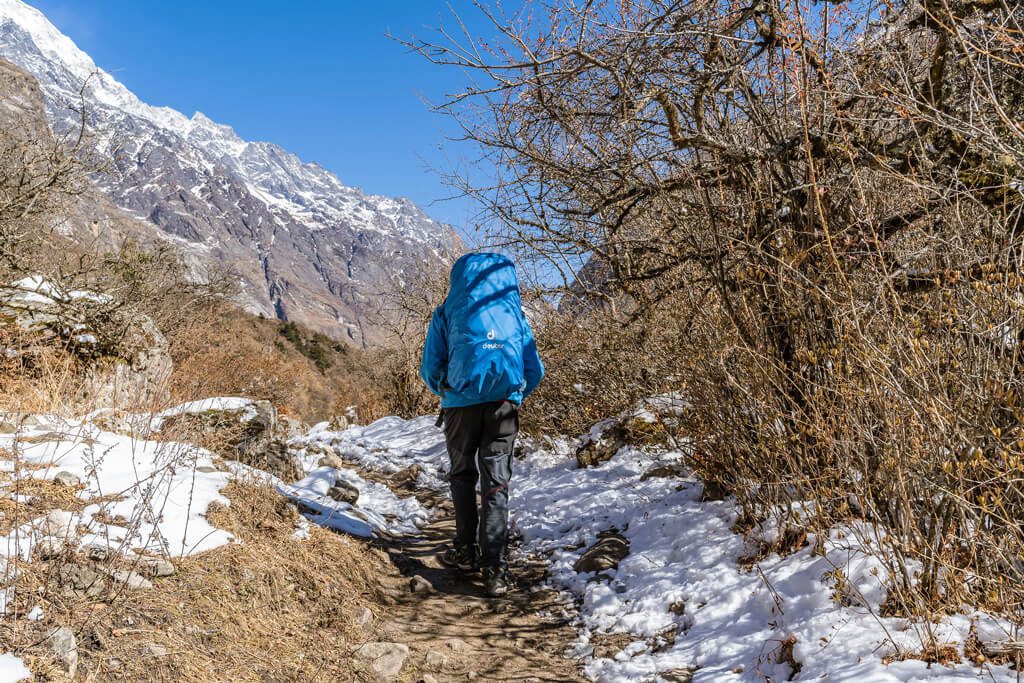
We have prepared an 11-day Langtang Valley Trek Package in which trekkers can complete the round trip starting from Kathmandu. The actual footslog starts from Syabrubesi, climbing up to our eventual point Kyagjin Gompa of Langtang Valley.
Brief Itinerary of 11 Days Langtang Valley Trekking
| Day | Destination | Elevation gained |
| 1 | Kathmandu Arrival | 1400 m |
| 2 | Exploring UNESCO heritage sites in Kathmandu | 1400 m |
| 3 | Depart to Syabrubesi | 1492 m |
| 4 | Trek to Lama Hotel | 2447 m |
| 5 | Trek to Mundu | 3550 m |
| 6 | Trek to Kyanjin Gompa | 3817 m |
| 7 | Customized activity day | 4773 m(max) |
| 8 | Descend to Lama Hotel | 2447 m |
| 9 | Reach Syabrubesi | 1492 m |
| 10 | Return to Kathmandu | 1400 m |
| 11 | Departure day |
Detailed Itinerary of Langtang Valley Trek
Day 1: Kathmandu Arrival
Welcome to the heart of Nepal, Kathmandu Valley. As you land at the Tribhuwan International Airport, a representative of Peregrine awaits you displaying your name card. He will then escort you to your designated hotel.
As you settle in, you will receive an invitation for a traditional Nepalese dinner where you will meet your Langtang Valley Trekking guide and the team. Your guide will give you a brief orientation about your trek along with the dinner.
Day 2: Exploring UNESCO heritage sites in Kathmandu
Kathmandu Valley is famous as the city of deities. There are numerous temples and shrines representing the two main religions of Nepal, Hinduism and Buddhism. In the morning, we will prepare a ride to the holy temple of Pashupatinath. Walking briefly through the paved streets of the sacred Pashupatinath Temple, you usually get to feel the change in the atmosphere compared to the chaotic city area of Kathmandu.
The destination for the day to explore will be Boudhanath Stupa and Kathmandu Durbar Square. Visiting these sites, you might want to end your day with Nepalese delicacies in and around the Thamel area.
Day 3: Depart to Syabrubesi
Along with the air of Kathmandu Valley, we hop in our vehicle and depart towards the initial point of the Langtang Valley trek. Depending upon the traffic on the Trishuli highway, we might reach Syabrubesi after seven to eight hours of driving. The driveway gains elevation, providing brief sightings of surrounding mountains viz: Mt. Ganesh, Mt. Manaslu, and Mt. Langtang.
We are reaching Syabrubesi. We will check in at our hotel and lodge for the night.
Day 4: Trek to Lama Hotel
On this day, we venture on our first trekking trail from Syabrubesi crossing the Bhote Koshi River. The river originated in Tibet; hence, the name Bhote Koshi means Tibetan River. The trail gradually increases from standard to steep terrain giving us a significant climb through the sub-tropical forest. You will see your first Rhododendron forest on this trail along the route. We will end today’s trek lodging in a local tea house in the village.
Day 5: Trek to Mundu
Gaining strength from last night’s sleep, we will start a fantastic day with an equal ascent but challenging elevation. In the first half of the day, the Langtang trek route will lead us to forested trails and get us to Ghore Tabela. You can take a short break whilst the guide finishes essential chores at the permit checkpoint.
Resuming the walk from Ghore Tabela towards the Mountain blooming trail, we complete the other half of the day.
Day 6: Trek to Kyanjin Gompa
Today we will climb further uphill trails that open to high meadows and pasture land for yaks. You will bump into various small monasteries through the Langtang Valley trails, colorful prayer flags flapping with the wind. Next, compared to the Mundu trails, you will walk fewer hours and reach Kyanjin Gompa afterward. Reaching there, we will take advantage of extra time to visit the region’s well-renowned oldest monastery, ‘ Kyanjin Gompa’.
Day 7: Customized Activity Day
By the way, we do provide a leisure day in our itinerary. You can call for a rest during the 7th day of the trek. You can also decide on what activity you want to carry out. Out of various activities, the most feasible ones are listed below:
- Visit the first Cheese factory and learn about the history of cheese in Nepal/ Langtang Valley.
- Hike to the base of Langtang Lirung Glacier to see a fantastic view of the bowl-shaped valley, snow-capped peaks, and spiritual atmosphere.
- Climb to the Kyanjin Ri viewpoint to get better and fantastic scenery of glaciers, valleys, Mt. Langtang, and other mountain ranges.
Day 8: Descend to Lama Hotel
Reminiscing the memories of spectacular Langtang Valley and its magnificent features, we backtrack to Lama Hotel.
Day 9: Trek to Syabrubesi
Retracing the same forested trails and crossing a few suspension bridges above the Bhote Koshi River, we make our way to Syabrubesi.
Day 10: Return to Kathmandu
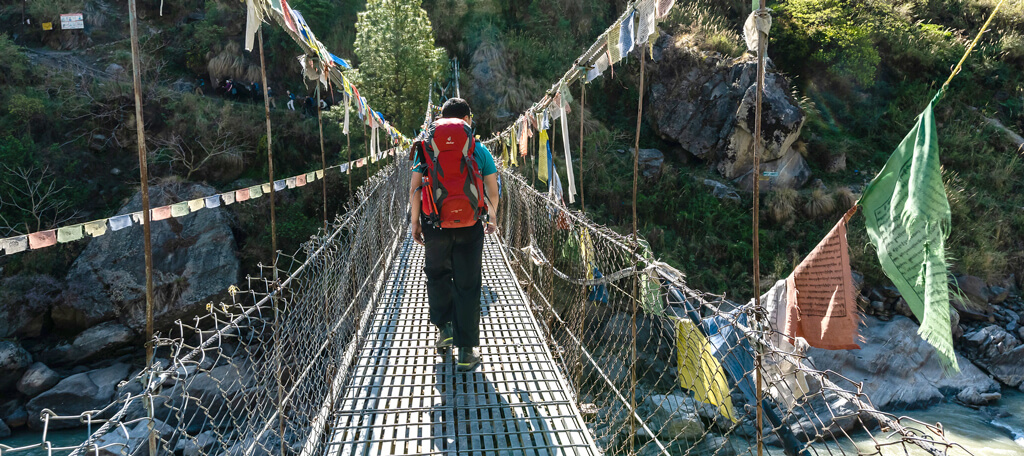
Finishing our last breakfast at Langtang Valley Trekking Point, we depart to Kathmandu on our private vehicle.
Day 11: Departure to your country
Lastly, leaving behind Nepal while carrying a heartfelt, beautiful Langtang Valley Trek experience, you will return to your country.
If you don’t have enough time to do this trek, you can also complete this trek in 7 days. Please check “Langtang Valley Trek 7 Days.”
Note:
The above-mentioned itinerary is a simple form of directions that we are providing. We can customize your itinerary if you have more days in hand and want to explore more of the Langtang Region Trek. Also, there are multiple activities you can conduct on the way to the Langtang Valley Trek route. Some of the suggested activities are listed below:
- Rafting in Bhote Koshi River
- Bungee Jumping in Last Resort
- Mountain climbing in Yala Peak or Mt. Langtang Lirung.
- Tamang Heritage Trek
- Gosaikunda Trek
- Helambu Trek
Conclusion
Providing the best service to our guests is the vital function of Peregrine Treks and Tours. Feel free to enquire about the Langtang Valley Trekking package. Above all, join the venture with a trusted companion for one of the shorter yet adventurous treks. Langtang Valley is indeed beyond beautiful to be described in words. Knowing any words are never enough to describe its magnificent beauty, we ought to summon our words here.
